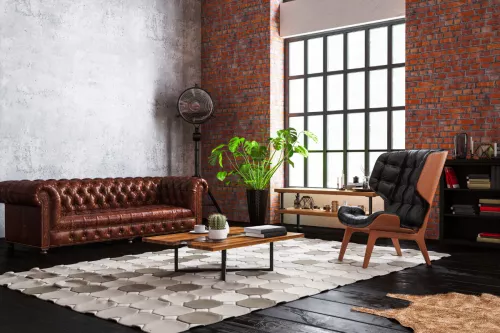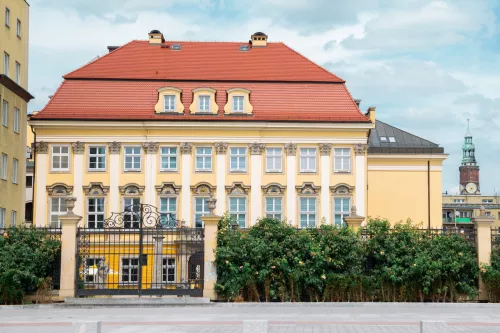Townhouses represent a form of residence that has undergone significant evolution over the years, becoming a cherished housing option in Europe and the Western world. These structures are known for their sustainability, having adapted to changes in environmental, social, cultural, and economic factors.
The design of townhouses, featuring compact construction with shared walls, contributes to their economic and energy efficiency. This design promotes the ideal density for communities that prioritize walkability and access to public transit.
Townhouses offer a blend of public and private spaces, with the front areas engaging with the community and the rear offering private outdoor spaces for leisure and gardening. Their architectural designs are adaptable to local and environmental conditions, providing variety, a sense of human scale, and personal identity within a community.
With a rich history of development, townhouses embody key concepts that are valuable for modern architecture and urban planning. These multi-level homes include a range of functional spaces, such as living areas, dining rooms, and amenities like swimming pools and gyms, making them efficient in space utilization and ideal for those who value community interaction and a healthy lifestyle.
What is the Meaning of Townhouses?
Historically known as terraced houses or row houses, townhouses represent a style of medium-density housing that has evolved from its early European origins to a global presence in both urban and suburban settings.
Characterized by their shared walls with adjacent properties, townhouses blend the concept of communal living with private luxury, originally serving as the dwellings of the bourgeoisie in the urban landscapes of London and Paris in the 17th century.
Over time, these multi-level homes, each with its own distinct entrance and often modest front and back yards, have become synonymous with the efficient use of space in densely populated areas, marked by their tall, narrow silhouette.
As townhouses spread to the burgeoning colonial cities of North America—Boston, Philadelphia, and New York—in the 18th century, they began to adapt to the local urban fabric. By the turn of the 20th century, the townhouse in New York City had evolved into the rowhouse, a more utilitarian form built in sets of four, six, or eight, with minimal differences among them.
Today, the townhouse has transcended its urban origins, appearing in smaller towns, on city outskirts, and in suburban areas where they often constitute uniform, attached residences within distinct communities governed by homeowners associations.
Despite their variations in design and location, townhouses remain defined by their key characteristic: being part of a continuous row with shared walls, while still maintaining individual entrances and a sense of personal space.
Townhouse Key Characteristics

Townhouses, a popular housing option in urban and suburban areas, have several distinguishing features that set them apart from other types of residences, such as:
Shared Walls
One of the most defining aspects of townhouses is their shared walls. Typically, a townhouse will share at least one wall with an adjacent unit. This architectural feature is instrumental in reducing construction and heating costs due to fewer exposed exterior walls compared to detached homes.
However, this can also raise concerns about noise and privacy, which are usually addressed through modern soundproofing techniques and community guidelines.
Multiple Floors
Townhouses are known for their multi-story layouts, which usually include living spaces such as the living room, kitchen, and dining area on the ground floor, and private areas like bedrooms and bathrooms on the upper floors.
This vertical division of space allows for a clear separation of living and sleeping areas, maximizing the use of the available square footage in a compact footprint. The multiple floors design also enables townhouses to fit more living space into smaller plots of land, making them an efficient housing solution in densely populated areas.
Individual Ownership
Unlike condominiums or apartments, where ownership might be limited to the interior space of the unit, townhouse owners typically own both the interior and the exterior of their units, including the land on which the unit sits, like any front or backyard space.
This ownership structure allows for more autonomy in making modifications and personalizing the space. However, it also means that the owner is responsible for the maintenance and upkeep of both the interior and exterior of the property, although some tasks may be covered by the homeowners' association fees.
Common Areas
Many townhouse communities are part of a planned development that includes shared amenities and common areas. These can range from basic features like sidewalks and landscaping to more elaborate amenities like parks, swimming pools, gyms, clubhouses, and playgrounds.
These shared facilities are maintained through homeowners' association (HOA) fees paid by the residents, ensuring that the amenities are kept in good condition without individual owners needing to shoulder the responsibility.
Townhouse vs. House
The main distinction between a townhouse and a detached house lies in the shared walls and the ownership of the land. While a standalone house offers complete privacy and control over the property, a townhouse might come with certain restrictions due to its proximity to neighbors and communal areas governed by an HOA.
Townhouse vs. Condo vs. Apartment: What’s the Difference?
Housing types like condos, townhouses, and apartments differ in terms of ownership, design, and community dynamics. Condos involve owning the inside of a unit with shared management of exteriors and common areas by an association, blending private and communal living.
Townhouses offer more autonomy, with owners controlling both the inside and outside of their units and enjoying a more traditional home-like structure with multiple levels and separate entrances.
Apartments, typically rental spaces within larger buildings, offer a straightforward lease arrangement without the ownership responsibilities associated with condos and townhouses. While townhouses and condos often come with Homeowners Associations (HOAs) that maintain shared spaces and set community rules, apartment amenities are usually managed by landlords or property management companies.
Townhouses stand out by sharing walls with neighboring units, offering a unique blend of community and privacy. They can be standalone properties similar to single-family homes or part of condo communities with shared ownership and governance. Apartments, usually single-level units within larger complexes, can be owned (as in condos or co-ops) or rented, with renting being the more common scenario.
What Does it Mean to Live in a Townhouse?
Living in a townhouse strikes a balance between the privacy of a single-family home and the convenience of community living. Residents often enjoy close-knit neighborhoods, lower maintenance responsibilities, and access to shared amenities. The multi-story layout also provides a clear separation between living and sleeping areas, appealing to those seeking a more traditional home feel without the upkeep of a detached house.
Advantages and Disadvantages of Townhouse Living
Townhouses present a mix of benefits and drawbacks for residents, making them a unique option in the housing market.
Advantages
Affordability
Typically, townhouses are more budget-friendly than detached homes, making them an attractive choice for first-time homebuyers looking to invest in property and build equity at a more accessible price point.
Financing
Securing a mortgage for a townhouse is akin to the process for single-family homes, with the added benefit that townhomes may be eligible for various government-supported home loans from agencies like the Federal Housing Administration, Department of Veterans Affairs, and the U.S. Department of Agriculture.
Shared Amenities
Living in a townhouse community often means access to shared facilities such as clubhouses, fitness centers, and swimming pools, enhancing the living experience without the individual responsibility for maintenance.
Maintenance Responsibilities
While townhouse owners are typically responsible for both interior and exterior maintenance of their units, this can foster a sense of pride and autonomy. Certain maintenance aspects, particularly structural concerns, might be managed by the homeowners' association (HOA).
Disadvantages
Homeowners' Association (HOA)
While an HOA can take care of some maintenance tasks, it also imposes fees and regulations. These fees can vary widely and come with strict enforcement of community rules, potentially leading to penalties for infractions. In severe cases, non-payment of HOA fees can lead to liens or even foreclosure.
Reduced Privacy
The shared-wall aspect of townhouses means less privacy compared to detached homes, with a higher likelihood of overhearing neighbors.
Multiple Levels
The multi-story design of townhouses may pose challenges for residents with mobility issues or the elderly.
Limited Space
Although townhouses typically offer more space than apartments, with multiple floors, they can still be more compact compared to standalone homes.
People also ask
Are townhouses a good investment?
Townhouses can be a good investment, particularly for first-time homebuyers or those looking for a balance between affordability and lifestyle. Market conditions and location play significant roles in investment potential.
Can you customize a townhouse?
Customization possibilities depend on the HOA rules and the structural flexibility of the townhouse. Interior customizations are usually permissible, but changes to the exterior may require approval.
Do townhouses have garages?
Many townhouses come with attached or detached garages, offering convenient parking and additional storage space.

 Marcio Vasconcelos
Marcio Vasconcelos





